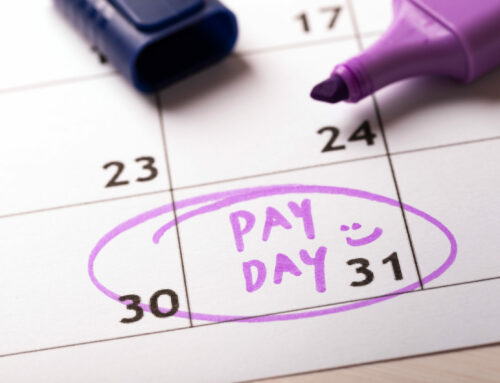Nonprofit budget. Ugh.

Not everyone’s favorite topic.
Yet a budget is a critical tool in managing your organization.
And way too many small nonprofits operate without one.
A nonprofit budget can bring so many positives:
- Finances are much easier to manage because you know what expenses and revenue to expect.
- Success is easier to measure because you can compare your actual numbers to your budgeted numbers to see how you’re doing.
- Difficult times are more easily avoided because you can see what’s coming for the next several months and make better decisions about what to say “yes” to and what to say “no” to.
If you want to grow your nonprofit, a budget is not optional.
You must have one to guide your path and to show funders your operations described in numbers.
You see, your annual operating budget is the numbers version of your annual plan. It tells in numbers what you’re planning to spend money on during the year.
Without an annual budget, you’re swinging in the dark, and could easily overspend, winding up deep in debt or worse, unable to continue your programs.
We had a client a while back with expenses over $600,000 a year for programs…. and no organizational budget.
I’m not sure how they knew what they were doing, how much money they had, when it was ok to hire someone, or when to expand services.
If you use your checkbook alone to guide financial decisions, you could find yourself in trouble quickly.
It’s easy to see cash in the bank and think, “Yeah, we’ve got money – go ahead and buy that expensive piece of equipment.”
Then when no more revenue comes in that month, you may find yourself unable to pay bills or make payroll (not fun!).
I know that not everyone is comfortable with numbers and that budgets can be overwhelming.
So, here’s a helpful guide to creating a budget for your small nonprofit.
 Tip #1 Don’t wait until the last minute to start. Start early and give yourself plenty of time to gather data, think, plan, and put everything on paper.
Tip #1 Don’t wait until the last minute to start. Start early and give yourself plenty of time to gather data, think, plan, and put everything on paper.
If your fiscal year starts January 1, start working on your budget in September or October so you have plenty of time to create it and get it approved before you need to implement it.
Working on a budget while you’re scrambling won’t produce good result.
Tip #2 Use real numbers. Don’t pull numbers out of the air.
Use last year’s actual numbers as a starting place and get quotes from vendors for new or expanded expenses.
We once had a client who wanted to get a grant for a new program and gave us a ballpark number to work with. Guess what?
You can’t get a grant with a ballpark number.
We were pretty sure the foundation would laugh at that because they want to see the detail of how their money would be spent, including a quote from a vendor.
If your nonprofit is new, you’ll need to use estimates for your first budget.
Tip #3 Have enough detail to be meaningful. There’s no perfect list of items to include in your budget and every nonprofit is different.
Include enough detail so that your budget makes sense.
If one line item makes up more than about 10-15% of the total expenses or revenue, break that item down and use sub-categories (especially helpful for items like staff and programs).
Here’s a sample budget from a horse rescue:

Tip #4 Document your assumptions and calculations. As you plan your year and decide what you will raise and spend, make notes about it either in the budget itself or on another page.
For example, if you assume $10 per person per month for office supplies, write it down.
Otherwise, you’ll likely forget, and when someone asks you how you came up with that number, you won’t be able to explain it.
Also make notes about any services or supplies that someone is donating and whether it’s just for this year or from now on.
 Tip #5 Don’t prepare the budget alone. Involve other staff so you know what their needs/wants are.
Tip #5 Don’t prepare the budget alone. Involve other staff so you know what their needs/wants are.
This helps get their buy-in to the process and encourages them to work within the budget once it’s approved.
If you don’t have staff, involve key volunteers or Board members.
Again, involvement creates buy-in – plus, getting different view points can be super helpful to see what you might have missed.
And, helping with the budget is part of the Board’s role.
Tip #6 Be realistic. It’s easy to get excited and put some pie-in-the-sky revenue numbers in your budget but listen – it’s important to the success of your programs that your revenue and expense estimates are realistic.
Whatever you include for fundraising revenue needs to be backed up with a detailed fundraising plan.
Hope is not a strategy.
If the most you’ve raised is $50,000, don’t put $500,000 down for revenue unless you know EXACTLY where it’s coming from.
Tip #7 Create a process/timeline for budgeting. Start 4 to 6 months before you need your budget in place so you have plenty of time to work through a process, including getting info from other staff or volunteers, getting Board review and approval, and sharing the final approved version with staff and volunteers before your new fiscal year begins.
Make this part of your nonprofit’s culture so it happens systematically every year.
Tip #8 Separate operations expenses from capital, equipment, and special projects. If you’re planning on purchasing a vehicle, renovating a facility, or have some other special project in mind, create a separate budget just for that.
Keep your operations budget focused on operations.
Otherwise, when you look at your actual numbers the following year, you may use those as your basis, forgetting that there was a $50,000 donation for a vehicle.
That kind of donation typically doesn’t come every year, and you probably don’t need a vehicle every year.
If you forget and include those actuals, your revenue will be $50,000 overstated, and you’ll be left scratching your head in confusion when your revenue in the new year is $50,000 short.
See how that could be confusing if you don’t separate it out?
Tip #9 Include the non-cash items. To get a true picture of the cost to operate your nonprofit, include in-kind donations (materials, services, etc.) and volunteer labor in your budget.
These items are often overlooked and can significantly undervalue a nonprofit.
For example, if you run an animal shelter and have over 1,000 volunteer hours per month, that’s worth $33,490 per month (Or $401,880 annually!!)
Independent Sector values a volunteer hour at $33.49 in 2024, and when you include this in your budget, it shows a foundation or a donor how well supported your nonprofit is – plus what it would cost if you had to pay for their time.
Include that amount as both a revenue and an expense line item so they cancel each other out.
Tip #10 Double-check your math. Once you get all your numbers on paper, in an Excel worksheet, or in a Google Sheet, double check the math.
Formula mistakes are easy to make (even in tools like Excel or Google Sheet), so double check the numbers manually to be sure you have an accurate bottom line on your budget.
Surplus or Deficit?
 What if your budget doesn’t balance? Is it okay to have a surplus?
What if your budget doesn’t balance? Is it okay to have a surplus?
Yes, it is as long as it’s not a huge one.
Early in my career when I was really getting the hang of fundraising, we ended a year with a $50,000 surplus. Not surprisingly, I started getting turned down for grants. I’m sure the foundation didn’t want to give us $5,000 when we had $50,000 sitting in the bank.
Now, if we had described that money as a rainy day fund and that our Board set a policy that we would have 3 months’ worth of expenses in the bank, that might have been different.
Just like it’s ok to have a surplus, it’s ok to have a small deficit as long – as you can explain what your plan is to close the gap and move toward zero so your budget balances.
A huge deficit can make funders nervous and rightly so.
No one wants to give money to a nonprofit in a precarious financial situation.
But a small deficit can show funders how their donation will make a difference.
The Bottom Line
Budgets don’t have to be hard, even if you’re not a numbers person.
Do your best and be open to learning through the process.
Very soon, you’ll have a nonprofit budget that serves you well and helps you manage the finances.






Leave A Comment